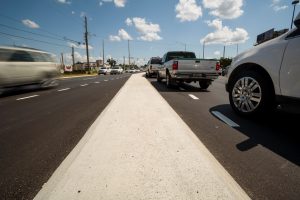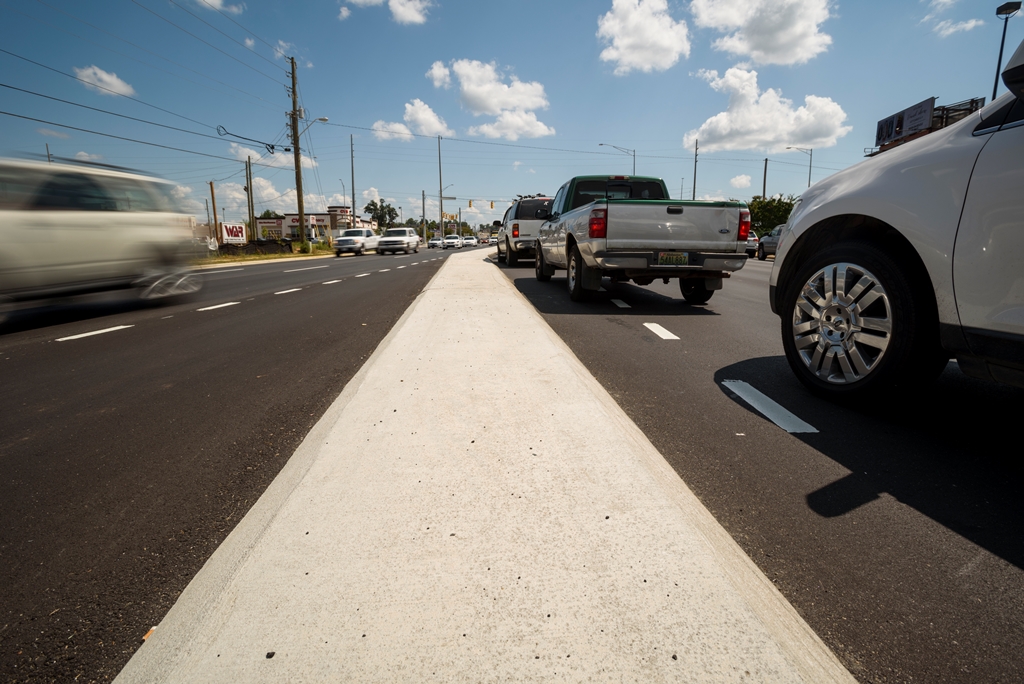
TUSCALOOSA, Ala. — The three days just before Thanksgiving are some of the worst times of the year to be on the road, according to a recent study of traffic data by The University of Alabama Center for Advanced Public Safety.
In 2015 in Alabama, there was a daily average of 460 automobile crashes on the Monday, Tuesday and Wednesday of Thanksgiving week. The average number of crashes per day the rest of the year is 409. The uptick in crashes is attributed to more traffic, traveling after sunset, deer and alcohol.
“The weekdays immediately preceding Thanksgiving have significantly more crashes than would be expected from the average of the rest of the year,” said Dr. David Brown, with UA CAPS. “These are days of high volume with a mix of both commuter traffic and people getting to their holiday destinations.”
The best day to be on the road is Thanksgiving, since relatively few people are traveling on that day, according to the study. The Friday and Saturday after Thanksgiving are considerably better than those before it. However, there is a concentration of people coming back from the holiday on Sunday, which makes it higher than expected for a Sunday.
The annual study employed the Critical Analysis Reporting Environment, or CARE, a software analysis system developed by CAPS research and development personnel to automatically mine information from existing databases.
Crash records for the study were provided by the Alabama Law Enforcement Agency, or ALEA.
In traffic data examined in 2015, weather was not a factor, however CAPS research has found crashes can increase by as much as 40 percent in wet weather.
“We strongly advise travelers to watch the weather and avoid rain and low visibility days if at all possible,” Brown said.
During the week, there are higher than expected crashes after 5 p.m., with lighting conditions listed as a major contributing factor, according to the study. Supporting the visibility issues of dusk and darkness, the most over-represented factor reported is listed as “Unseen Object/Person/Vehicle.”
“The change in the time zone in Alabama just a few weeks before the holiday will cause more people to be traveling in darkness,” Brown said. “The combination of late afternoon rush hours with a darkening environment is lethal, and the weekday rush hours should be totally avoided if possible.”
Another overrepresented factor during Thanksgiving week is deer, which was also related to lighting conditions. Collisions with deer were more than two times likely when compared to the rest of the year.
During this time of year, deer often move around at dusk or shortly after, a heavy drive time during Thanksgiving week. The start of the deer hunting season during this time increases their activity.
There were 84 deer strike crashes reported in the Thanksgiving week of 2015, however there could have been several hundred, the researchers said, as it’s possible only those of the highest severity are reported. Also, crashes where the driver avoids the deer, but hits something else, are not reported as deer strikes.
Another overrepresented factor was alcohol. Citations for driving under the influence were 17 percent more likely during Thanksgiving week than the rest of the year, and crashes where police officers believed alcohol was a contributing factor were about 25 percent more likely that week.
“The reason for increased alcohol and drug use is the freedom from going to work the following day; thus, each day becomes, for many, like a Saturday, in which typically there is increased alcohol/drug use both late night and the very early morning hours,” Brown said.
Also, seatbelt use was about 25 percent lower during Thanksgiving week when compared to the rest of the year. Numbers from Thanksgiving week 2015 show the odds of being killed when not restrained is at least 20 times that when properly restrained, according to the study.
“This could be due to people getting outside of their normal routines or not staying buckled on longer trips,” Brown said. “There is really no excuse for such negligence, especially for the kids in the cars.”
Considering the holiday driving season is looming, Brown offered the following tips:
- Do not drink and drive, and do not ride with anyone who has had any alcohol or drug use, including many prescription drugs. Avoid the late-night and early morning hours when you could become a victim of an impaired driver.
- Watch the weather, and, if at all possible, avoid times of decreased visibility or wet pavement, especially when coupled with darkness. If caught in a heavy storm, take a break from driving until the shower passes.
- Leave early enough so that you accomplish most of your driving in the daylight.
- Thanksgiving and Christmas days during the daylight hours are good times to potentially avoid crashes.
- Travelers in rural areas, especially where deer are protected, should recognize the nocturnal nature of deer and that they seek food at dusk during this time of year. Be especially careful in new road construction areas where rye has been planted as a cover on re-worked shoulders and roadsides.
- Delegate all cell phone use to a passenger to keep the driver from distractions. This has clearly become one of the major traffic safety issues over the past five years.
- Always use safety restraints, and make sure everyone in the car uses theirs, even on the shortest of trips. This is the number one defense against becoming a fatality victim.
- Keep speed down because every 10 mph reduction in speed cuts the probability of being killed in a crash in half. Most GPS systems clearly confirm an extra 5 mph in speed does not cut much time from a trip, but it could result in passengers becoming fatal victims in a crash.
- Drive to reduce risk – back off instead of tailgating, stay out of the blind spots of large trucks, and let aggressive drivers pass.
Contact
Adam Jones, engineering public relations, 205/348-6444 or 205/348-5320
Source
Rhonda Stricklin, associate director, Center for Advanced Public Safety, rhonda.stricklin@ua.edu
